Tomato Season: right around the corner!
Written for the Davis Enterprise, March 29, 2012
Click on any image for a larger version
Tomato season is nearly upon us, and every year we get a new crop of gardeners wanting to grow America's favorite vegetable.
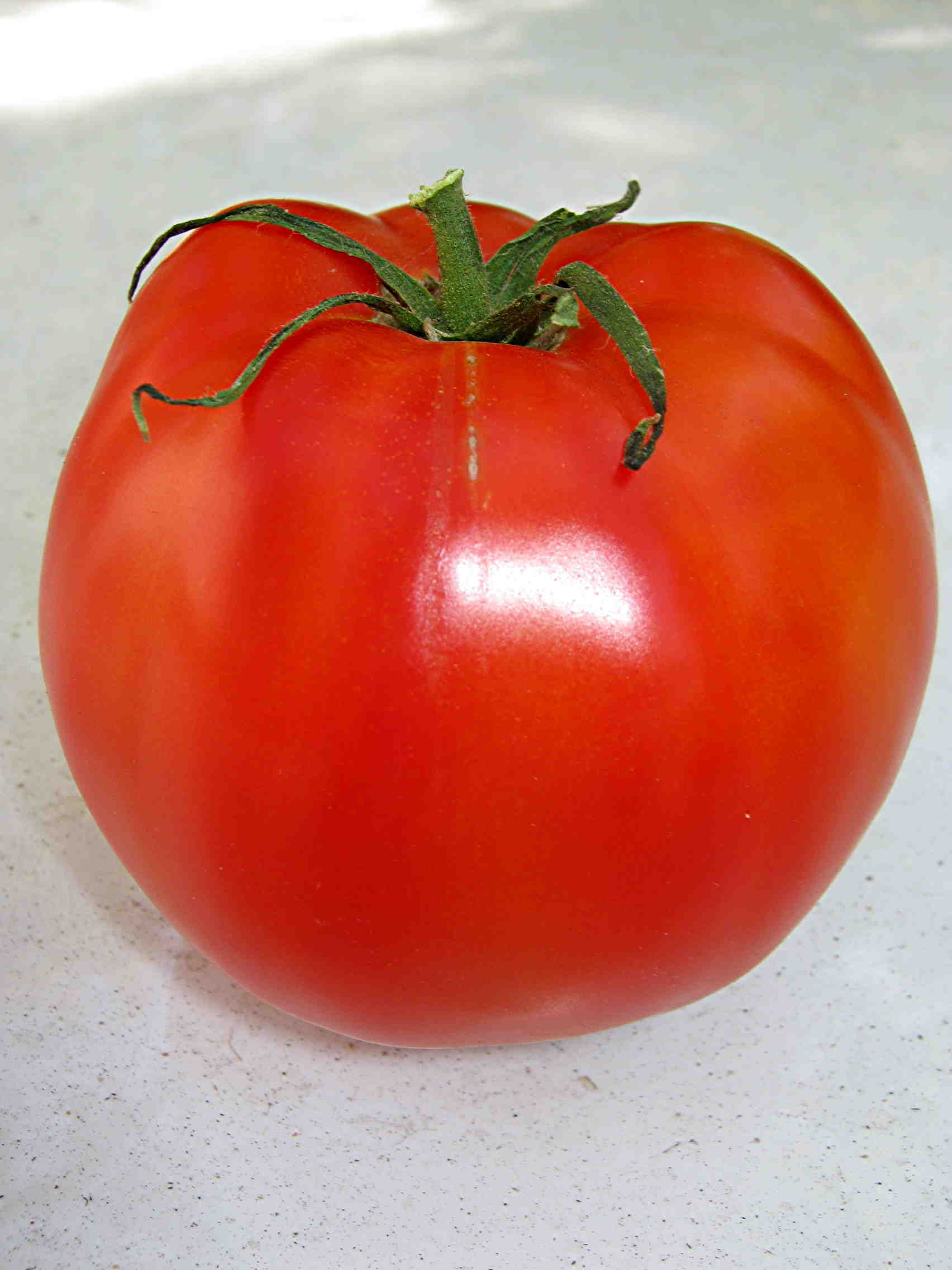
Abraham Lincoln is a good all-purpose red heirloom tomato. Good yield, excellent flavor.
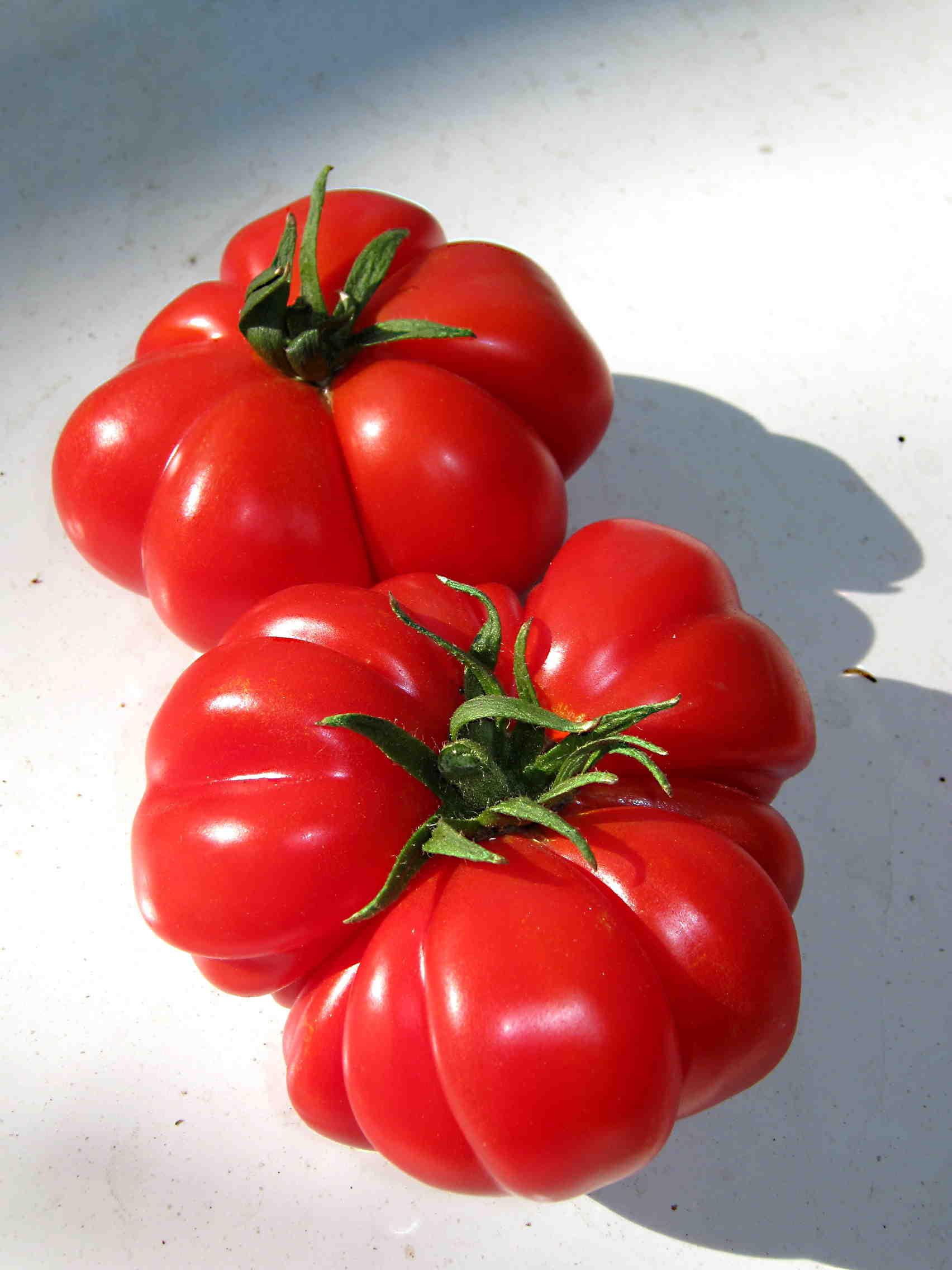 Costoluto Genovese: our family's favorite heirloom! Big fluted fruit, beautiful color, rich flavor, and very meaty. This heirloom gives me good yields consistently
Costoluto Genovese: our family's favorite heirloom! Big fluted fruit, beautiful color, rich flavor, and very meaty. This heirloom gives me good yields consistently
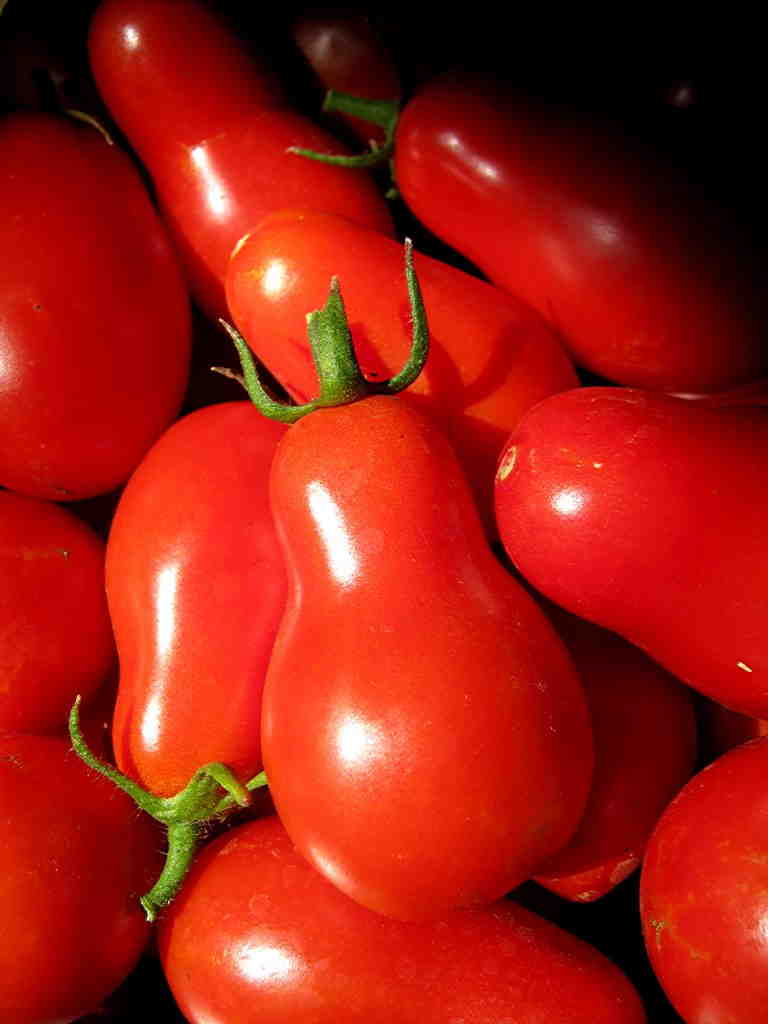 Juliet hybrid is prolific! The plants produces well over a hundred small, pear-shaped meaty fruit. Freeze them whole, use in salads, salsas, and sauces. Or just eat right off the vine.
Juliet hybrid is prolific! The plants produces well over a hundred small, pear-shaped meaty fruit. Freeze them whole, use in salads, salsas, and sauces. Or just eat right off the vine.
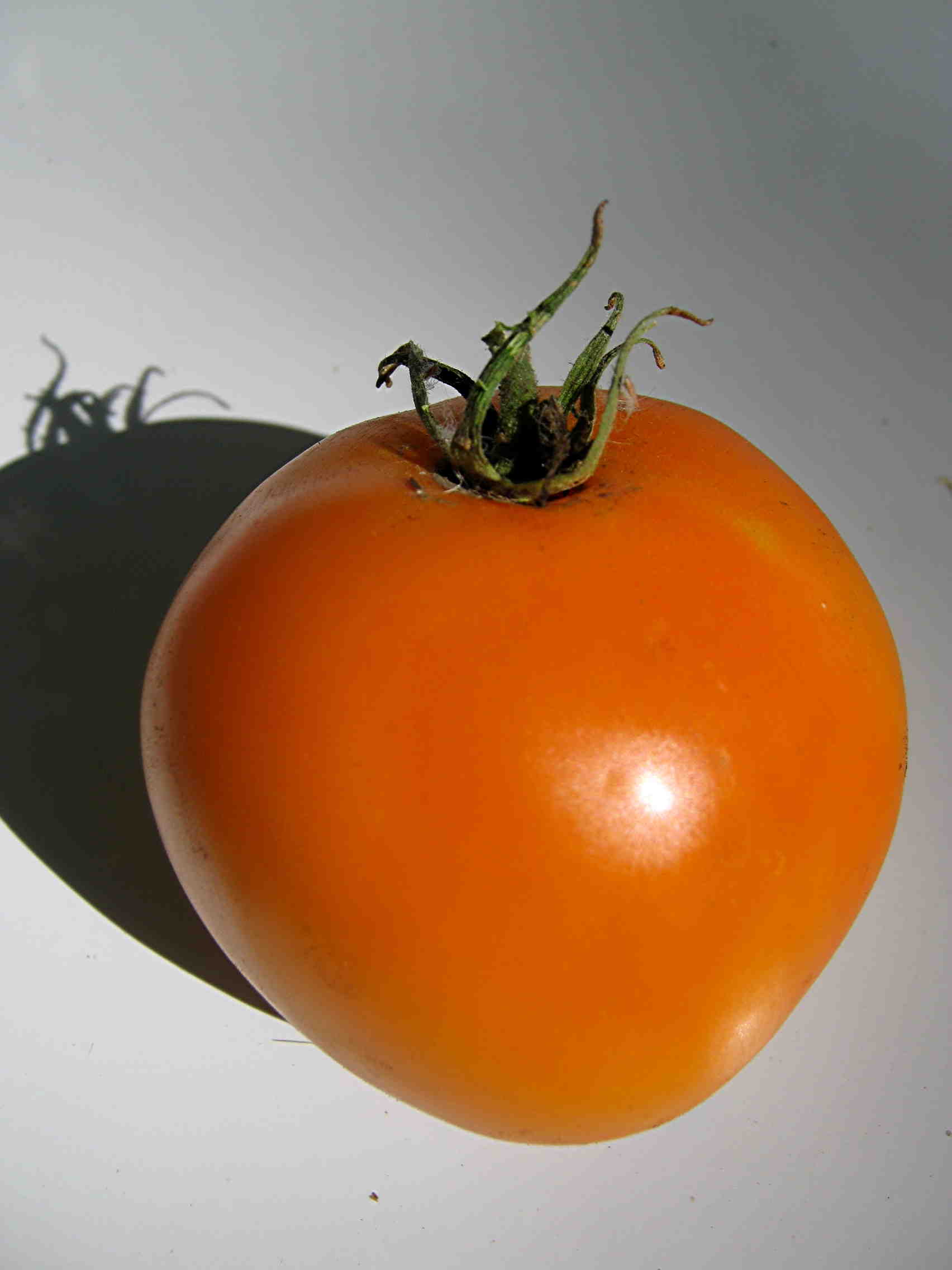 Lemon Boy is a yellow hybrid tomato. Medium-size fruit is abundant. The skin is a little tougher than other yellow types, so it hold up better in bad weather.
Lemon Boy is a yellow hybrid tomato. Medium-size fruit is abundant. The skin is a little tougher than other yellow types, so it hold up better in bad weather.
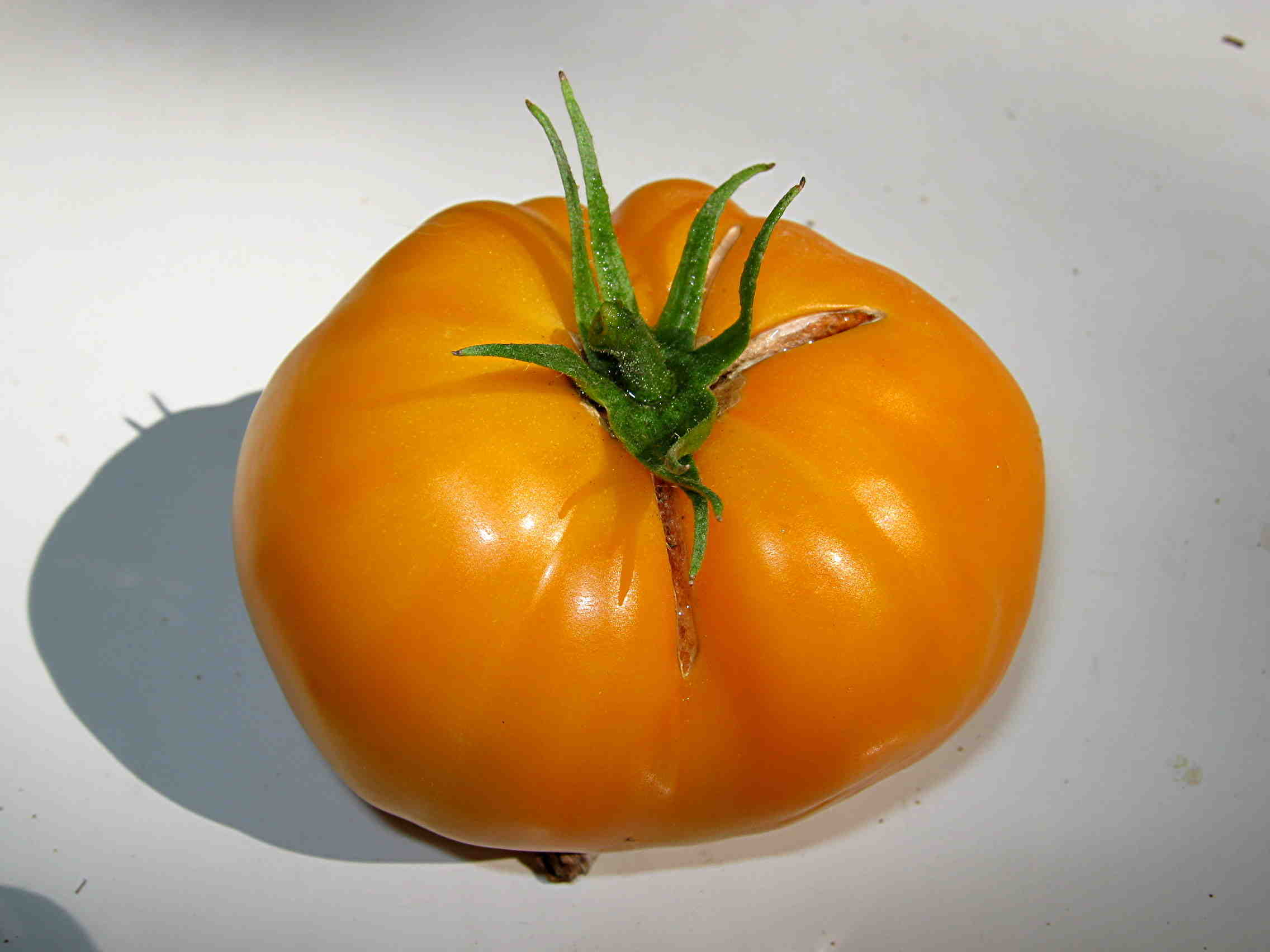 Pineapple is a beautiful heirloom tomato, yellow with a red blush and often with red streaks in the skin and flesh. It has a sweet, very large fruit, and reasonable yield. The thin skin is somewhat vulnerable to weather damage.
Pineapple is a beautiful heirloom tomato, yellow with a red blush and often with red streaks in the skin and flesh. It has a sweet, very large fruit, and reasonable yield. The thin skin is somewhat vulnerable to weather damage.
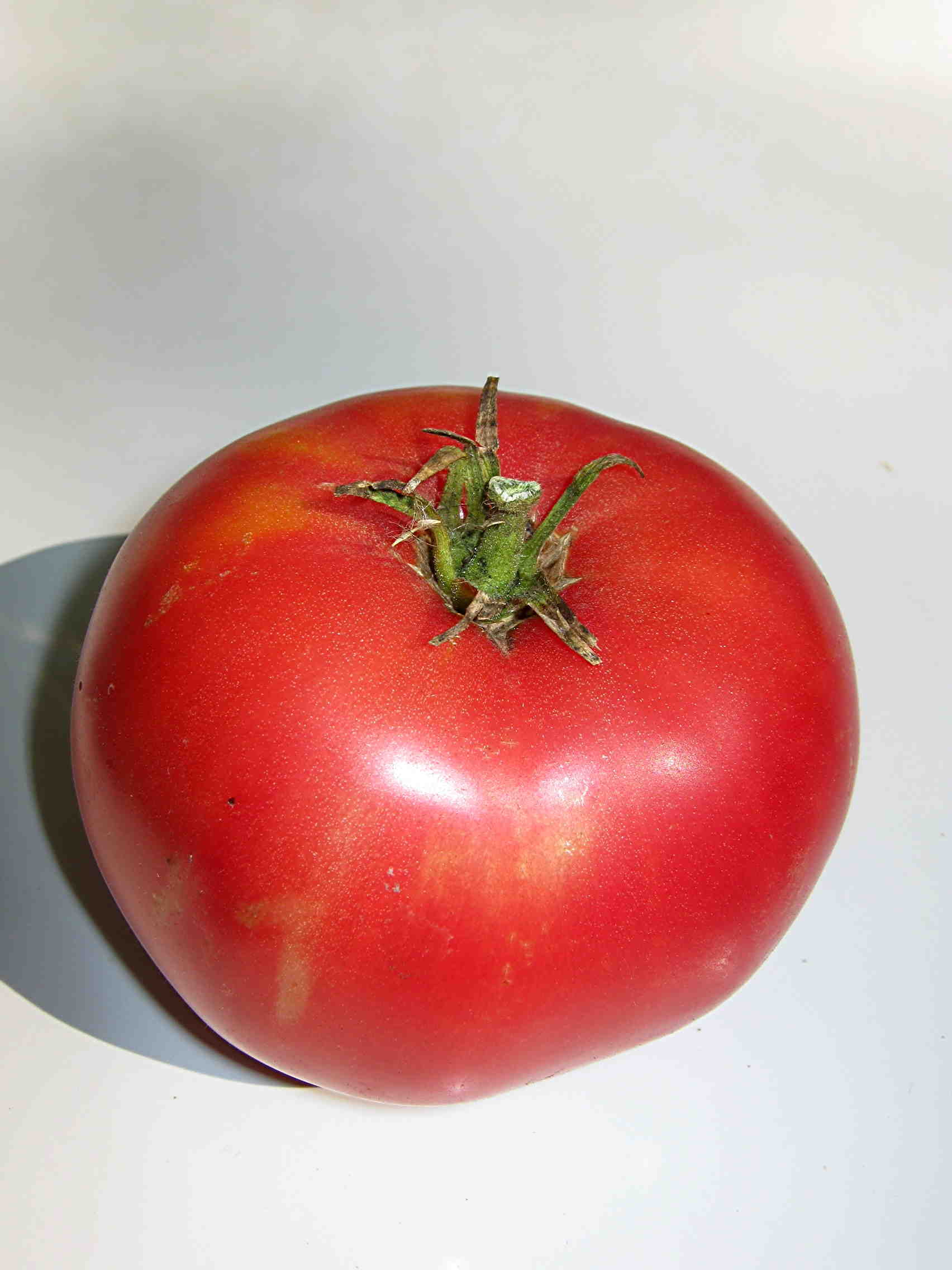 Shady Lady is a new hybrid tomato that produces well with less sunlight than other varieties. Determinate type, meaning the plant gets to only 3 to 4 feet tall. Excellent flavor and yield.
Shady Lady is a new hybrid tomato that produces well with less sunlight than other varieties. Determinate type, meaning the plant gets to only 3 to 4 feet tall. Excellent flavor and yield.
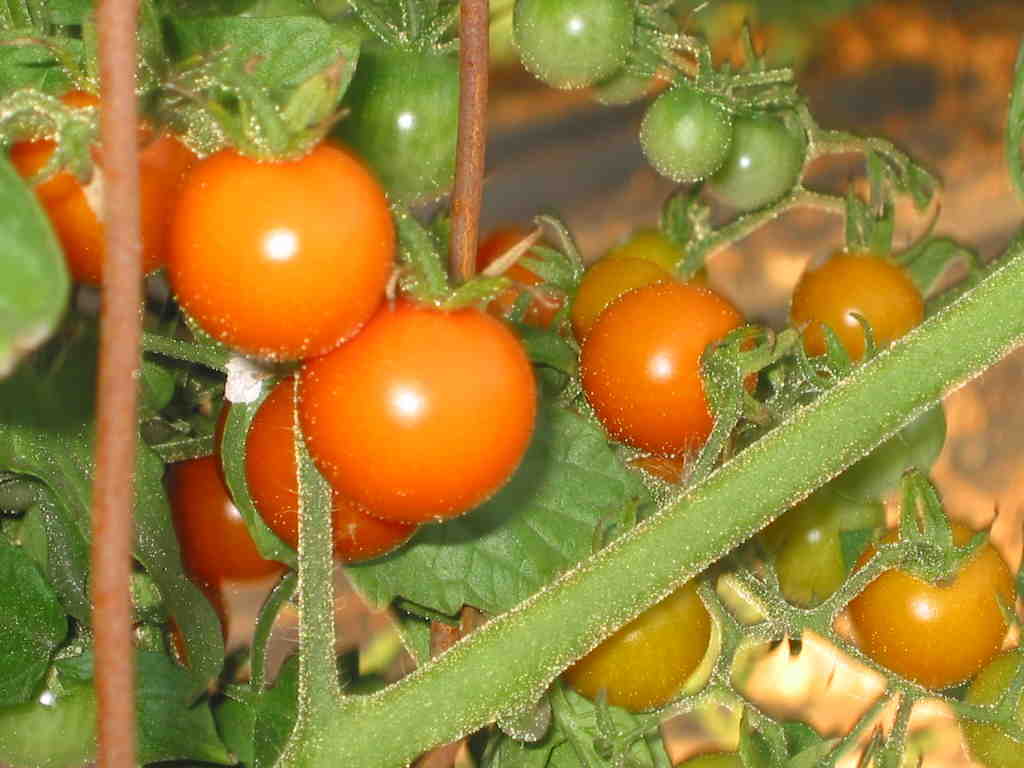 Sungold hybrid cherry tomato has become a garden favorite. It produces hundreds of golden fruit, with rich, tangy, sweet flavor.
Sungold hybrid cherry tomato has become a garden favorite. It produces hundreds of golden fruit, with rich, tangy, sweet flavor.
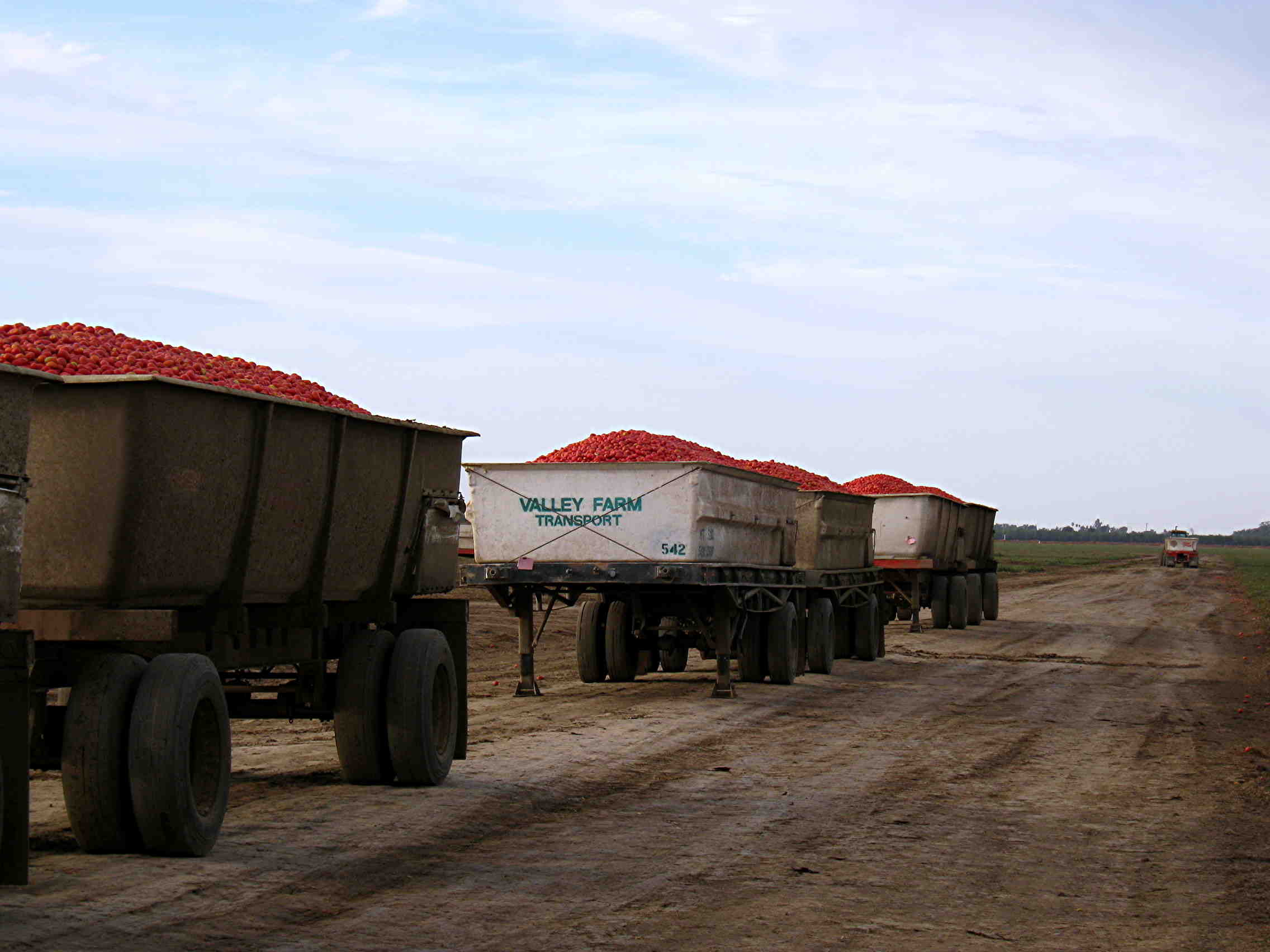 Canning tomatoes are still an important crop in Yolo and Solano counties.
Canning tomatoes are still an important crop in Yolo and Solano counties.
Good news: we live in tomato country. The plants are very easy to grow here, we have a long growing season, and if you select the right variety you will get plenty of fruit. But a lot of folks are really jumping the gun, wanting to plant before the soil is warm. On Saturday a gentleman asked me, "isn't it time to plant tomatoes?" He was wearing three layers of clothing and a wool hat. The temperature Saturday topped out at 50 degrees. The low was 37. We had a light frost a little over a week ago (March 19). The soil temperature, according to the Davis weather station, is at 53 degrees.
So my answer to him was No. Are you wearing shorts in the garden yet? That's a good indicator. Put on your shorts (if you're modest), go out and sit on the garden bed. Uncomfortable? The plants will be too.
Tomatoes prefer a soil temperature of 70 degrees! We usually achieve that when nights are 50 - 55 degrees and daytime temperatures are in the 70's for several days in a row. By the calendar, that is usually late April at the earliest. You can plant anytime through June with good results here.
What happens if you plant too early?
The plants sulk and don't grow. Leaves turn purplish, due to nutrient deficiencies caused by cold soil. If there is rain, and if the plants had any fungus infection, it spreads rapidly from leaf to leaf. Snails, slugs, and earwigs eat leaves. In short, you are planting your tender greenhouse-grown seedling into a hostile environment. Ultimately it may recover and grow when temperatures warm up. But a later-planted seedling that goes into warm soil will give better results.
Nevertheless, there are benches full of tomato seedlings at every garden shop now. So if you do buy some baby plants, keep them up close to the house where the building can provide some warmth. Check those nighttime temperatures. Amend your soil now with compost.
Select the right variety? Don't they all do well here?
Nearly all tomatoes grow vigorously in the Sacramento Valley. Getting leafy tops is not a problem. But not all produce fruit reliably. A few varieties are more heat sensitive, meaning that the blossoms fall off without producing fruit when daytime temperatures are above about 85 degrees. For that reason, we do not recommend any of the Beefsteak varieties (Beefsteak, Beefmaster, Supersteak) or the heirloom Brandywine tomatoes. The plants grow to 8 to 10 feet, and produce 3 to 4 fruit total. Very disappointing.
What should I look for when buying plants?
Deep green color. It's not a problem to buy tall, even overgrown tomato plants. Avoid plants with spots on the leaves, as they may be infected with early blight fungus. I pick off flowers, if any, when I plant because I want the plant's energy to go into growth, not fruit production, in its first weeks. A note about spots: I have seen some plants with bleached-looking blotches on the leaves. Those came out of the greenhouse and got stressed by cold weather. They will recover.
Which ones do grow and produce well?
There are over a hundred varieties of tomatoes available to choose from at local stores. As a generalization, hybrids yield more heavily, and heirloom tomatoes have more interesting fruit. So a mix of hybrids and heirlooms gives the best results. Try some tried and true varieties, and experiment.
What is an heirloom? A hybrid? Are any of them GMO's?
Heirloom varieties are older varieties that have been handed down for generations. They are open-pollinated, meaning that (with care to avoid cross-pollination) you could save the seed. Most heirlooms have some special character. That could include interesting color, less-acid flavor, meatier or juicier fruit. Often they are regional: the Brandywine heirloom varieties come from Brandywine region of Pennsylvania, where they are well adapted.
Cross-pollinating certain parent plants, to get seedlings with the desirable characteristics of the parents, creates hybrid tomatoes. Disease resistance, higher yield, extra flavor and color, more compact habit. Seedlings grown from fruit of hybrids will not come true.
No tomato varieties that you buy are genetically modified in the sense of having genes inserted into them. Hybrid or not, they aren't GMO's.
Do the heirlooms taste better?
Many have special flavor. But hybrid tomatoes often win blind taste trials as well. Early Girl, a popular hybrid variety that is especially well adapted here, scores very high. Flavor is most affected by how you water. Deep, infrequent watering concentrates the flavor of any variety.
Do they need special food?
Don't over-fertilize tomato plants! We have rich soil here. Too much nitrogen leads to too much top growth and poorer fruit production. My preference is to turn in a planting compost that contains some organic source of fertilizer at the time of planting. That's all I use. If you use a fertilizer, lower-nitrogen types are best. The first number on the bag should be less than 10, such as 4-5-3 or 5-5-5.
How much sun do they need?
Tomatoes yield best in full sun. Half-day sun can work, but at least four to six hours is preferred. If you have more shade than sun, consider a cherry or sauce tomato. Or look for the new hybrid called Shady Lady, which produces a surprisingly large crop of large, flavorful fruit in less sun than most others need.
Should I plant them deeper in the ground?
Yes. We don't do this with other plants, but tomatoes benefit from deep planting. They will send out roots from the nodes (where the leaves are) and get a better root system.
You said they get eight feet tall?! ? Don't they run all over the ground?
The tomato plant is a vine. A few shorter varieties exist. Those are called "determinate," and they only grow to 4 feet or so. All others get 6 to 8 feet or bigger, and they will run all over the place if you don't stake or cage them. Techniques vary. For example, a single stake on each plant, to which you continue tying the plant until mid-summer. Better is a metal cage made from concrete wire, anchored securely, which the plant fills up. You reach in to pick the fruit.
Some favorite hybrid varieties.
o I always plant Early Girl hybrid for reliable yield and excellent flavor.
o For production for processing, I do one of the reliable vigorous hybrids such as Champion or Better Boy. Mortgage Lifter and Stupice (pronounced Stew-peach) are high-yielding heirlooms.
o For sauce and salsa, I wouldn't be without Juliet hybrid.
o For people to nibble in the garden, the most popular cherry tomato ever is the orange-fruited, tangy-flavored SunGold hybrid.
Some of my favorite heirlooms include:
o Abraham Lincoln is becoming a favorite, with deep red fruit, high yields, and rich flavor.
o Costoluto Genovese, an Italian variety with large, meaty, fluted fruit. This one yields exceptionally well for me and has become one of our favorites.
o Pineapple. Very large yellow fruit are striped with red, very sweet; the plant is very productive. Lemon Boy is a yellow hybrid with high yields and good flavor.
o Plant a striped or purple variety, just for interest. Mr. Stripey, Green Zebra, Cherokee Purple, are good examples.
o Caspian Pink and Giant Belgian are very large-fruited heirlooms (fruit often over 1 lb each) that have given good yields some years. They are very sweet.
o Red Currant and Yellow Pear are small-fruited heirlooms popular with kids. Very high-yielding!
o Try something you've never heard of! You may find a new family favorite.
What about peppers and eggplants?
Don't plant them in cold soil. Plants that go in too early never yield as well as those that are put into warm soil later in the season. May is best.
Tomatoes are subtropical plants! When it feels subtropical, go ahead and plant your garden. Meanwhile, keep the seedlings warm, get your garden ready, and start collecting recipes.
Charts of tomato (and pepper) varieties can be found on our website here
Here's another article about tomatoes!
© 2011 Don Shor, Redwood Barn Nursery, Inc., 1607 Fifth Street, Davis, Ca 95616
www.redwoodbarn.com
Feel free to copy and distribute this article with attribution to this author.
Click here for Don's other Davis Enterprise articles
